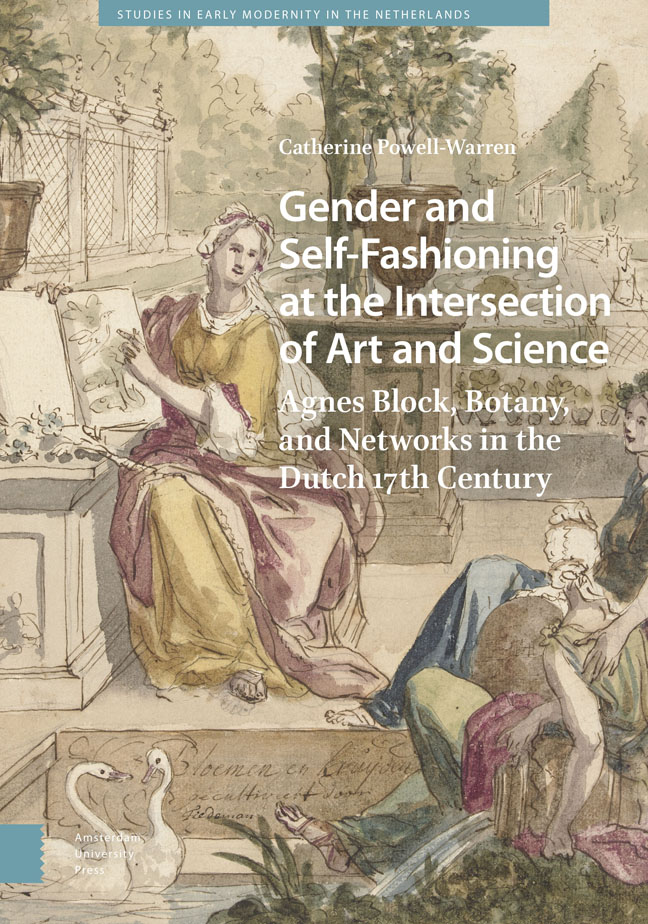 Gender and Self-Fashioning at the Intersection of Art and Science
Gender and Self-Fashioning at the Intersection of Art and Science Book contents
- Frontmatter
- Dedication
- Contents
- List of Figures and Photographic Credits
- Acknowledgements
- Introduction
- 1 Vijverhof and the Pursuit of Nature
- 2 Vijverhof in Context
- 3 Vijverhof as a Space of Knowledge Creation, Exchange, and Relationships
- 4 Becoming Flora Batava
- 5 Flora Batava in Context
- 6 The Bloemenboek and Block’s Watercolours: Self-Fashioning at the Intersection of Art and Science
- 7 The Bloemenboek as a Meeting Place and Visual Manifestation of Agnes Block’s Artistic Network
- Conclusion
- Appendix A
- Bibliography
- Index
7 - The Bloemenboek as a Meeting Place and Visual Manifestation of Agnes Block’s Artistic Network
Published online by Cambridge University Press: 20 February 2024
- Frontmatter
- Dedication
- Contents
- List of Figures and Photographic Credits
- Acknowledgements
- Introduction
- 1 Vijverhof and the Pursuit of Nature
- 2 Vijverhof in Context
- 3 Vijverhof as a Space of Knowledge Creation, Exchange, and Relationships
- 4 Becoming Flora Batava
- 5 Flora Batava in Context
- 6 The Bloemenboek and Block’s Watercolours: Self-Fashioning at the Intersection of Art and Science
- 7 The Bloemenboek as a Meeting Place and Visual Manifestation of Agnes Block’s Artistic Network
- Conclusion
- Appendix A
- Bibliography
- Index
Summary
Abstract: this chapter argues that the Bloemenboek performed a function for Block akin to that of an album amicorum: it was both a meeting place and the communal memory of Vijverhof. Block’s watercolours allow us to chart an artistic network that included other liefhebbers and botanists. By examining the watercolours and the circumstances of their production, we can establish that Block’s patronage and support likely weighed in favour of the artists she retained receiving other commissions. The watercolours and the network they delineate provide us with a vision of Block as a source of influence for many of the late seventeenth century’s best regarded artists.
Keywords: album amicorum; Bloemenboek as meeting place; artistic clusters; watercolours as objects; mechanisms of transmission
The examination of the Bloemenboek and of Block’s collection of watercolours more broadly in the previous chapter allowed us to deepen our knowledge and understanding of the manner in which Agnes Block’s devotion to Vijverhof and botany manifested itself through art, which in turn was very much part of her self-fashioning. In order to fully grasp Block’s place in the artistic and cultural environments of the Dutch Republic at the end of the seventeenth century, however, one needs a broader picture, which focuses on the artists of the watercolours and their patrons.
To that end, there is a twin methodological focus to this chapter: in the first place, it adopts lines of inquiry familiar to material culture, in which the emphasis is on the conditions of production and of use of the watercolours. Second, it follows the analytical framework employed in chapter 3 and explores the relationships that are manifested through the artworks. This approach confirms Block’s participation as an influential patron in a circle of artists and within a broader network of patronage. It also demonstrates that, for Block, art and artists, and the networks with which they were associated, were a necessary feature of her self-fashioning.
The Bloemenboek as a Meeting Place
A notable feature of the Bloemenboek is the way in which certain sheets have been assembled: some show the work of two artists, working on the same sheet; others show the work of two or more artists, working separately but reunited on a single sheet through Block’s cutting and pasting. These works put in relief an animating principle of the Bloemenboek and, indeed, of Vijverhof: collaboration.
- Type
- Chapter
- Information
- Gender and Self-Fashioning at the Intersection of Art and ScienceAgnes Block, Botany, and Networks in the Dutch 17th Century, pp. 243 - 262Publisher: Amsterdam University PressPrint publication year: 2023


